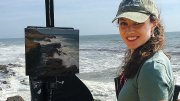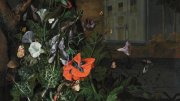Kathleen B. Hudson ’09 was expecting thunderstorms in Rocky Mountain National Park. The young artist had risen early and trekked five miles with a 50-pound pack in hopes of capturing the morning light dancing on the mist from Timberline Falls. After nearly six hours of painting, she tied her still-wet canvas to her pack and was making her way down the mountain when she found herself just feet from an angry mother elk. “I heard something on the trail behind me, and sure enough, she was tailing me,” Hudson recalls. “I don’t think I’ve ever been that nervous in my life. I knew she could charge at any point, and I would be toast!”
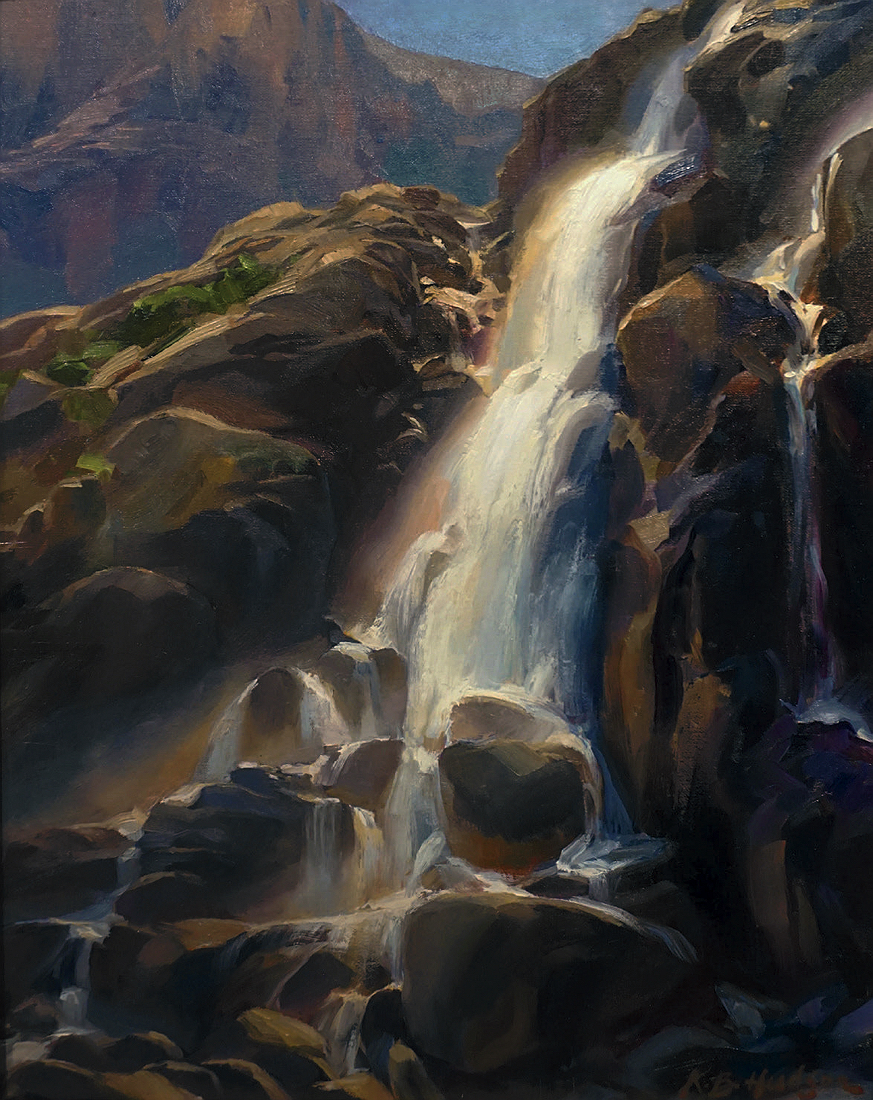
Eight years after that encounter, Hudson is a leading figure in the popular art movement known as painting en plein air (from the French for “in the open air”). While the discipline is sometimes billed as “the new golf”— a relaxing outdoor pursuit—Hudson knows better. “It is not remotely relaxing,” she says with a laugh. “It excites me, and I’m happy doing it, but it’s kind of a battle.”
The granddaughter of an Air Force pilot with international connections, Hudson grew up painting on family trips across the United States and Europe, as well as at home in Lexington, Kentucky. “I didn’t know plein air was a thing—I just took the watercolors outside,” she says. Visits to museums and historical sites formed a key part of Hudson’s homeschool curriculum (after seeing a John Singer Sargent exhibition at the National Gallery in Washington, D.C., she switched to oil paints), and by age 12 she had visited all 50 states. “Those trips played a huge role in shaping how I view the landscape as a means of understanding history and seeing things in context,” she notes.
But she had little interest in attending art school: “I’d already figured out what I love to paint.” Instead, at Harvard, she concentrated in history and literature. Exploring the idea of pilgrimage, she focused on the spiritual connection people felt to their environment during the Middle Ages. And, Hudson says, “It ended up being a lot more connected to what I do now than I could have imagined.”
Inspired by her studies, Hudson sees her plein air work as a search for meaning in the landscape. “I’m looking for something that stops me in my tracks,” she explains. “I love standing in remote areas that may have looked very similar 1,000 years ago, and I don’t doubt that people who traveled there in the past were arrested by the same views. There is something deeply human about being moved by our natural surroundings.”
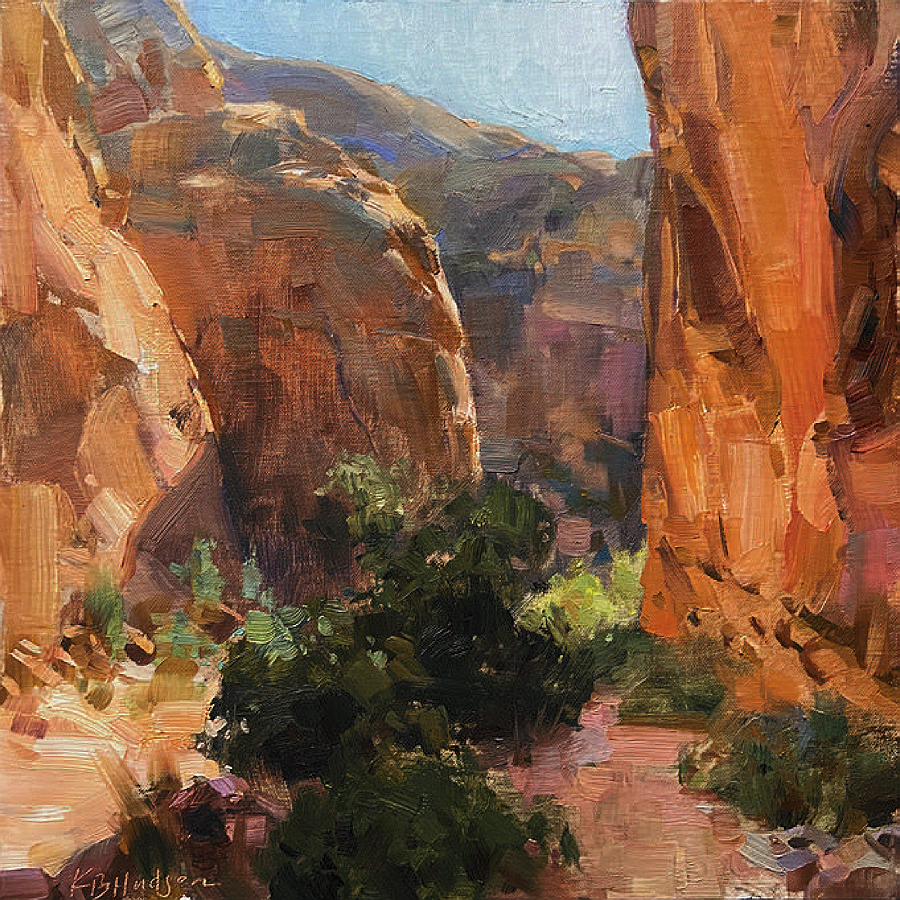
Reef National Park, Utah | Paintings courtesy of Kathleen Hudson
Before a painting trip, Hudson consults satellite maps to find the ideal spot to set up her easel. Upon arriving, she scouts the area on foot, taking photos to confirm her vantage point and ensure that she has sufficient reference material to execute or alter her plan as needed. “Plein air is a challenge because things will change as the sunlight changes,” she explains, “and something that was really compelling right at dawn might not be as interesting as something else 10 or 15 minutes later.”
After Hudson chooses a focal point in the scene and arranges the supporting elements, she works out the composition in a monochrome sketch or underpainting. She premixes the bulk of her colors on the palette before applying them to canvas with a wide range of brushes. “I want to create variety at every opportunity, because that’s what makes a painting interesting,” she says.
Hudson’s atmospheric oil paintings combine thick, expressive brushwork with the luminosity of the watercolors she favored as a child. Her work quickly attracted attention from galleries after she began participating in plein air festivals, and in 2016, Bright Morning, Timberline Falls not only survived the elk chase but went on to win the grand prize in the international Plein Air Salon, hosted by Florida-based Plein Air Magazine.
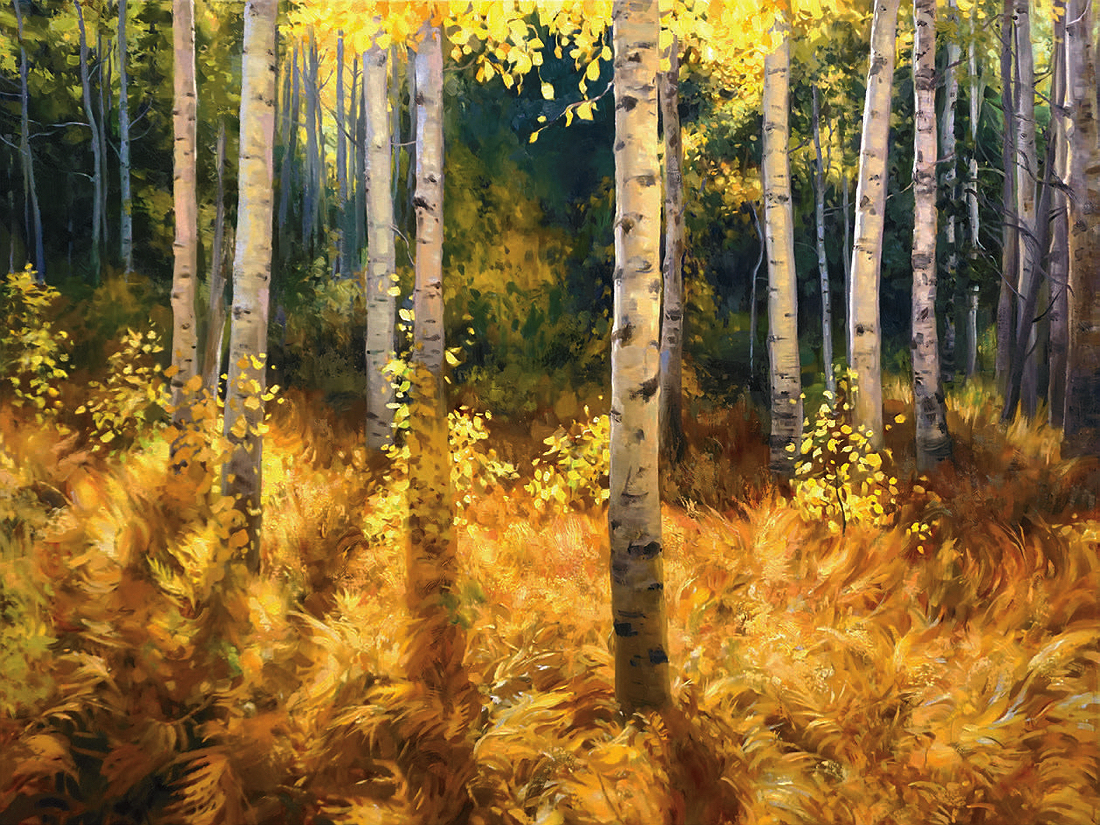
Today, Hudson’s work can be found in museums and private collections across four continents. Living in Colorado Springs with her husband and four children, she continues to paint outdoors but also dedicates much of her time to developing her studies and reference photos into elaborate studio works. One such piece is Aspen Glade in Fall, a large, multilayered composition in which backlit leaves and grasses blaze gold against a wooded backdrop.
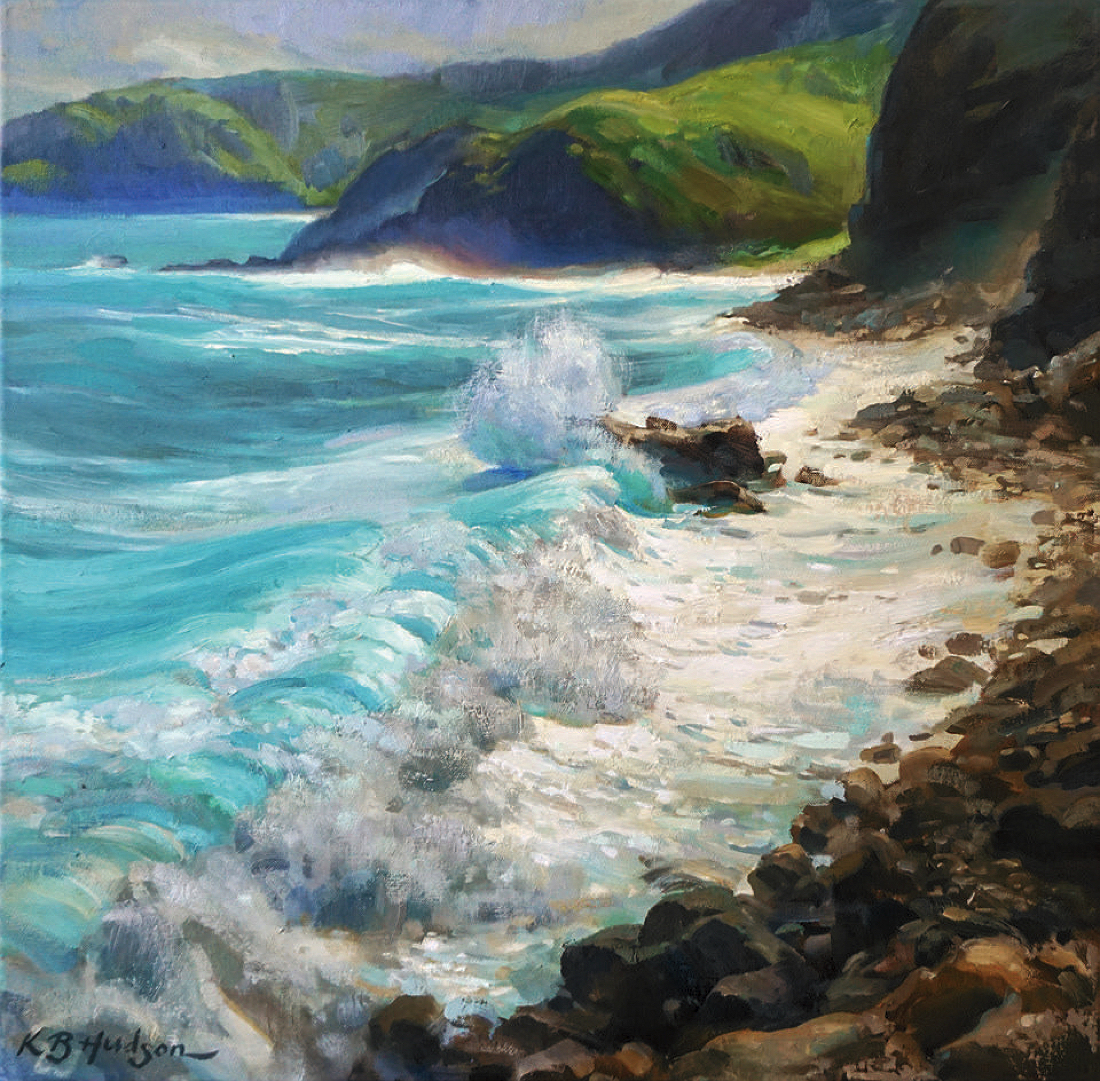
For Hudson, perhaps the best part of life as an artist is the community she’s found. “I’ll be at the studio and call up a friend in Maine to ask what’s on her easel, and I’m in a WhatsApp critique group where we share work back and forth all the time,” she says. When wildfires tore through Maui last fall, Hudson enlisted her friends’ help to organize Artists for Lahaina, an online art auction that raised more than $500,000 for the recovery effort. Hudson’s own contribution, North Maui Surf, is a studio version of a painting she had in a Maui gallery that burned down. “It was incredibly meaningful to see how artists were able to give back to a community that had welcomed us over the years,” she says.
A highly sought instructor, Hudson also teaches workshops around the country and records instructional DVDs, and she credits her time leading excursions into the White Mountains through Harvard’s First-Year Outdoor Program with developing her skills as both teacher and trekker. “I think the fact that I was mostly self-taught makes me want to spare my students some of the mistakes I struggled with for years,” she says, noting that it is never too late to start painting. “A lot of people feel like they regret not jumping in sooner, and I try to speak directly to that,” she says. “Being an artist is about how you interpret your subject matter, and whatever your life experience has been, you bring all of it to the canvas.”
